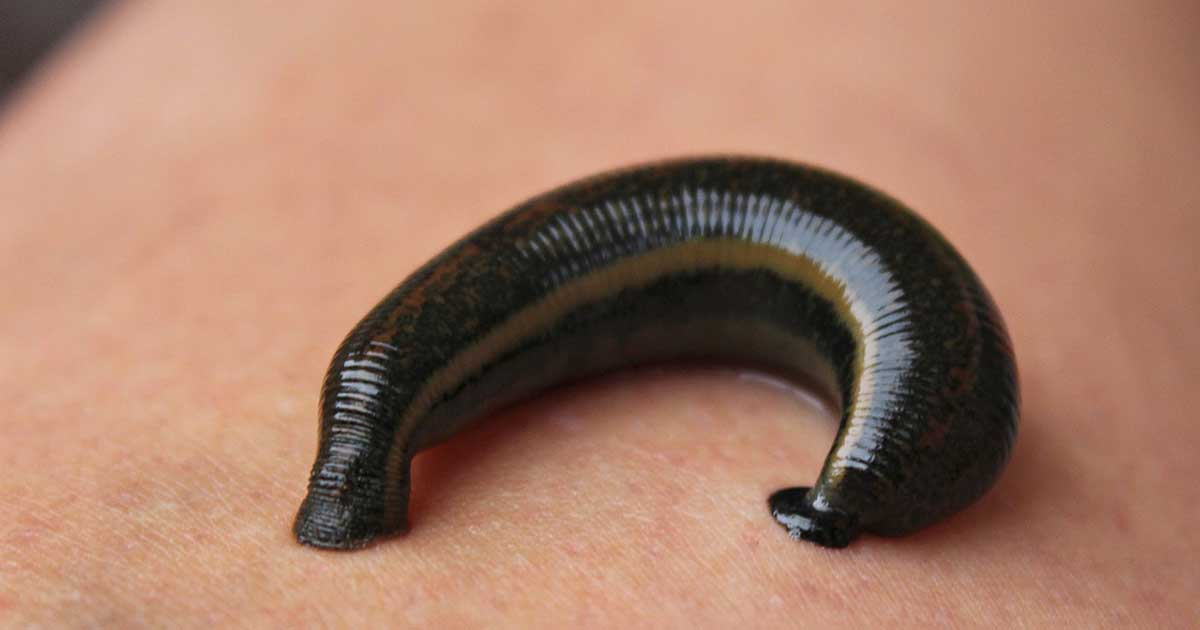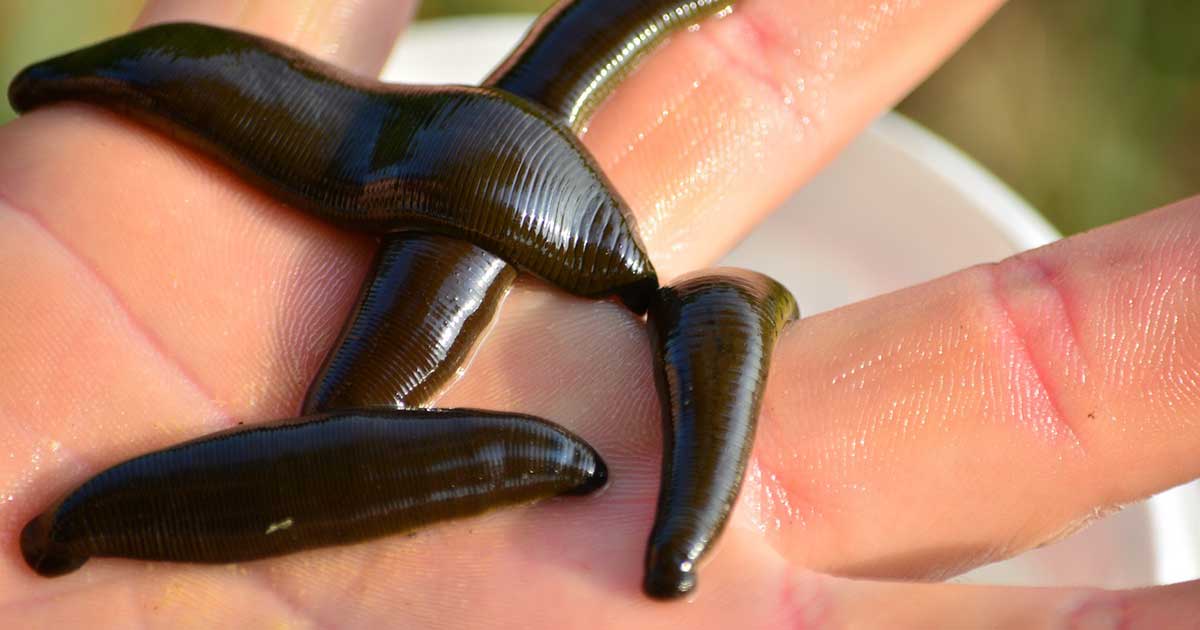Hirudotherapy is the use of leeches in a medically controlled environment to treat medical and surgical problems. Within the veterinary world, Hirudotherapy is less commonly used than in human medicine, yet has been shown to aid a variety of cases. This is something I have never personally seen or worked with, but as someone who likes a fair few too many gory movies, something I’d love to have the chance to.
Leeches are used to reduce swelling and inflammation of a desired area, therefore treatment for haematomas and seromas. This can also include orthopaedic swellings around pins/plates, especially at fracture sites. In some patients with hip and elbow dysplasia, owners reported increased mobility and decreased painful symptoms after treatment with leeches (Sobczak, 2014), proving its effectiveness. Horses with laminitis have been found more comfortable after the treatment, as the joint and hoof swelling is reduced (Sobczak, 2014).
Thickening
An interesting case study I found included a dog with patent ductus arteriosis (PDA) (Pride Veterinary Referrals, 2018). In accordance with this article, the condition causes an increased level of red blood cells due to a decrease of oxygen throughout the bloodstream and, in turn, increases the viscosity of the blood. Treatment for this includes blood drainage, usually in large volumes, and likely in a similar sense to how humans give blood. However, with the use of leeches, excess blood cells are extracted from the body in a safe and less invasive manner (needles, sedation, expense) and allow circulation of anticoagulant secretions from leeches to reduce the thickening. This, in turn, reduces pressure, through the heart.
Close up, leeches look a little bit like the Kraken – circles of teeth (300 of them to be more precise) – but in a tiny, pocket-sized version. However don’t “latch on” to the idea that all these teeth will cause a painful bite; their saliva contains both a local anaesthetic to numb their bite, and an anticoagulant (Hirudin) which prevents clotting of the blood, encouraging blood flow (Biopharm, no date B).
Encouragement
Each leech is encouraged to latch on to the affected area, and is allowed to feed until it drops itself off. This can vary anywhere from 30-120 minutes, varying from animal to animal (Sobczak, 2014). On latching, the coagulant is released, and once the leech has removed itself, the wounds will ooze for some time afterwards, and should be allowed to do so (Sobczak, 2014).
As stated previously, this treatment aids with blood flow from inflamed areas to reduce to build-up of cells or clots, and releases the pressure placed by these. Other medical issues benefiting from Hirudotherapy which I find to be interesting are skin grafts (along the sutured edges where seromas may form and stretch the areas), and aural haematomas.
In practice
I would love this to be something we could do within my practice as, although the swelling will reduce over a few days rather than an instant drainage, haematomas may be less likely to return in the future.
I can, however, understand why some owners would not go for this option, as it can have a messy aftercare. A dressing with swabs can be used to soak exudate as I’m pretty sure, just as we hate cleaning after a burst haematoma is shaken on the consult room ceiling, the owners may not be so fond of it over their kitchen ceiling either.
Dressings should be placed lightly to prevent pressure on the area, resulting in the opposite of the desired effect, clotting the area.

Dirty?
Now you’re probably thinking how could you possibly use a dirty leech on a sterile wound, the ortho surgeons would be turning in their graves!
Despite being known as the black gooey things from lochs and ponds, the leeches used for medical treatments are bred, stored and disposed of in an entirely sterile manner. They are kept in cold storage until required and warmed up gradually before use (Biopharm, no date C).
Each leech can only be used once, whether it is the same patient or not, and disposed of after use. This brings about a very controversial topic as most are destroyed as humanely as possible, however many have been kept as pets, or for use in ecosystem science.
Picky parasites
Although leeches seem bloodthirsty, they can actually be very picky. If manually warmed instead of being allowed to gradually acclimatise, they may not latch on.
Skin preparation can also be a factor in the efficiency of latching. The site can be clipped, and prepared with sterile water only as surgical spirit, antiseptics or harsh chemicals will prevent leeches from biting (Biopharm, no date C) – I can imagine the unpleasant taste similar to us biting our nails after using hand sanitiser.
Flea and worm treatment should be given out with a two-week window of the treatment as this can be another factor (Biopharm, no date C). If leeches are struggling to bite, a needle can be used to draw blood onto the skin and might spark their appetite.
Nooks and crannies
Hirudotherapy may be contraindicated for those with clotting issues, or wound breakdown (Sobczak, 2014). For those with open or surgical wounds, care should be taken to prevent those wanderers from investigating the open space. I reckon, just as a swab count is carried out in surgery, leeches should be counted. On a side note from this, when using for aural haematomas, padding should be used to stuff the ears preventing leeches from crawling down the ear canal (Biopharm, no date C).
Personally, I think Hirudotherapy is an interesting intervention and, from reading up, has some good uses in the way of medicine. However, I believe it should only be used for suitable reasons, and not every case, to avoid over-farming of these small creatures. I also like the idea that those used can be used further to live out their lives assisting in ecological work.

Leave a Reply